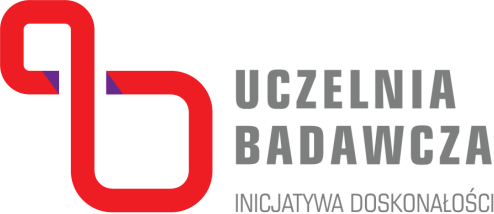 For centuries, women have made significant contributions to virtually all fields of science, including breakthrough discoveries, inventions and innovations. To recognise the past and promote future scientific achievements of women, the United Nations declared 11 February to be the International Day of Women and Girls in Science.
For centuries, women have made significant contributions to virtually all fields of science, including breakthrough discoveries, inventions and innovations. To recognise the past and promote future scientific achievements of women, the United Nations declared 11 February to be the International Day of Women and Girls in Science.
For centuries, women have made significant contributions to virtually all fields of science, despite the many social and cultural barriers that they have encountered. Having limited access to formal education and facing the competition of esteemed male scientists, they still managed to make breakthrough discoveries, inventions and innovations, often pioneering in the yet unexplored areas of research. To recognise the past and promote future scientific achievements of women, the United Nations declared 11 February to be the International Day of Women and Girls in Science.
Joining in the appreciation of the scientific work of female researchers, we present brief descriptions of their selected contributions to medicine and related fields. Enjoy!
American obstetrician and anaesthesiologist; creator of the Apgar score used to quickly evaluate the health of newborn children.
French virologist; Nobel Prize in Physiology or Medicine (2008); made a major contribution to HIV/AIDS research which helped improve treatment methods for AIDS.
British-born physician; the first woman to graduate from a medical school and receive a medical degree in the United States (in 1849); she co-founded the New York Infirmary for Women and Children.
Norwegian neuroscientist; Nobel Prize in Physiology or Medicine (2014) for the co-discovery of “cells that constitute a positioning system in the brain„, which helped scientists understand spatial deficits associated with e.g. Alzheimer’s disease.
American environmental microbiologist; studied the spread of global infectious diseases, particularly cholera, through water sources; contributed to the development of methods for preventing the spread of cholera.
Czech-American biochemist; the first woman to win Nobel Prize in Physiology or Medicine (1947); co-discovered the mechanism of the catalytic conversion of glycogen, which was crucial in the development of treatments for diabetics.
British biochemist; Nobel Prize in Chemistry (1964) “for her determinations by X-ray techniques of the structures of important biochemical substances” (namely penicillin, insulin, and vitamin B12).
American biochemist and pharmacologist; Nobel Prize in Physiology or Medicine (1988); her research revolutionized the development of new pharmaceuticals (the first drugs she produced were for leukaemia, malaria and infections).
English chemist and x-ray crystallographer; discovered the double helix structure of DNA and pioneered the use of X-ray diffraction.
American neurobiologist; studied the frontal lobe and its connection with working memory, which helped scientists understand such disorders as schizophrenia, Alzheimer’s, ADHD, cerebral palsy, Parkinson’s disease, and dementia.
American virologist; discovered the origins of human immunodeficiency viruses types 1 and 2 (HIV-1 and HIV-2) and the malaria parasite Plasmodium falciparum.
French nuclear chemist; daughter of scientists Marie Skłodowska-Curie and Pierre Curie; Nobel Prize in Chemistry (1935) for the synthesis of new, artificial radioactive elements.
Italian neuroscientist; Nobel Prize in Physiology or Medicine (1986); co-discovered the nerve growth factor which was later associated with possible treatments for e.g. Alzheimer’s disease, infertility and cancer.
American cytogeneticist; Nobel Prize in Physiology or Medicine (1983) „for her discovery of mobile genetic elements”; discovered the mechanism of genetic transposition.
Greek female physician; author of the oldest surviving medical text known to be written by a woman: On the Diseases and Cures of Women; her treatise influenced physicians not only in ancient Greece and Rome, but also in Medieval Europe.
English nurse and social reformer; considered the founder of modern nursing; pioneer in statistical graphics and reformer of hospital sanitation procedures; established the first secular nursing school in the world.
German biologist; Nobel Prize in Physiology or Medicine (1995); co-discovered the mechanisms of development of multicellular organisms from single cells in the process of embryogenesis.
American human geneticist; “the mother of modern cancer genetics”; discovered that chromosomal translocation was the cause of leukaemia and other types of cancer.
Polish transplantation surgeon and researcher; headed the world’s first near-total face transplantation; she has made a significant contribution to the development of microsurgery and transplantation medicine.
Polish-born French physicist and chemist; the only woman to win two Nobel Prizes (in Physics – 1903, in Chemistry – 1911); her research was crucial in the development of x-rays (discovered radium and polonium).
Chinese pharmaceutical chemist; the first Chinese woman to win a Nobel Prize (in Physiology or Medicine, 2015); inspired by ancient Chinese texts, she discovered artemisinin which is used to treat malaria and has saved millions of lives.
American medical physicist; second woman to win Nobel Prize in Physiology or Medicine (1977); co-developed the radioimmunoassay (RIA) technique used to measure biologically active substances (insulin, hormones, vitamins, enzymes, viruses, etc.).
If you wish to learn more about the role of women in medicine and health-related fields throughout centuries, we encourage you to read the interesting article on Science Museum’s website.



